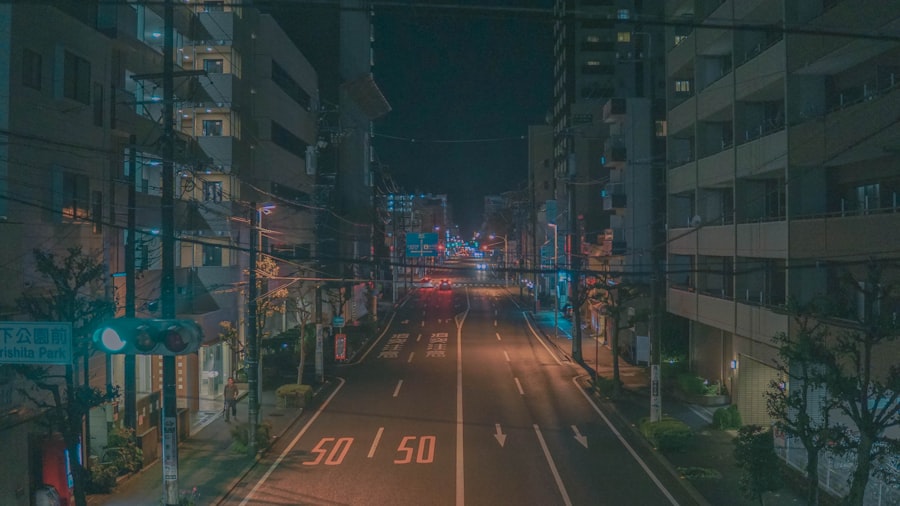Manga, a term that encompasses a wide range of comic books and graphic novels originating from Japan, has a rich and intricate history that dates back centuries. The roots of manga can be traced to the early 12th century, with the emergence of illustrated narratives known as “emaki,” which were hand-painted scrolls that depicted stories through a combination of images and text. These early forms of visual storytelling laid the groundwork for what would eventually evolve into modern manga.
By the Edo period (1603-1868), ukiyo-e, or woodblock prints, became popular, showcasing scenes from everyday life, landscapes, and kabuki theater. Artists like Hokusai and Hiroshige not only influenced the art world but also contributed to the visual language that would later permeate manga. The term “manga” itself began to gain traction in the late 19th century, particularly with the work of artists such as Rakuten Kitazawa, who is often credited with popularizing the term.
The Meiji Restoration (1868) marked a significant turning point, as Japan opened its doors to Western influences. This period saw the introduction of Western-style comics and cartoons, which inspired Japanese artists to experiment with new styles and storytelling techniques. The post-World War II era was pivotal for manga’s development, as artists like Osamu Tezuka, often referred to as the “God of Manga,” revolutionized the medium with his cinematic storytelling and character-driven narratives.
Tezuka’s work laid the foundation for many genres and styles that would flourish in the decades to come.
Key Takeaways
- Manga originated in Japan in the 12th century and has evolved over time to become a popular form of entertainment worldwide.
- The influence of manga on global pop culture can be seen in the popularity of anime, cosplay, and the adaptation of manga into live-action films and TV shows.
- Manga encompasses a wide range of genres, including shonen (targeted at young boys), shojo (targeted at young girls), seinen (targeted at adult men), and josei (targeted at adult women).
- The art styles in manga have evolved from traditional black and white illustrations to include vibrant colors and digital techniques.
- Manga has had a significant impact on Japanese society, influencing fashion, language, and even tourism, with many fans visiting locations featured in their favorite manga series.
The Influence of Manga on Global Pop Culture
Manga’s influence on global pop culture is profound and multifaceted, transcending geographical boundaries and cultural barriers. In the late 20th century, manga began to gain traction outside Japan, particularly in North America and Europe. The rise of anime, which is often adapted from manga, played a crucial role in this phenomenon.
Series such as “Dragon Ball,” “Naruto,” and “One Piece” captivated audiences worldwide, leading to a surge in interest in their source material. This cross-pollination between manga and anime has created a vibrant ecosystem where fans engage with both mediums, often leading to increased sales of manga volumes as viewers seek to explore the original stories in greater depth. Moreover, manga has inspired a plethora of creative works across various media.
Hollywood has taken notice, with films like “Ghost in the Shell” and “Alita: Battle Angel” drawing directly from manga sources. The aesthetic and narrative techniques found in manga have permeated video games, fashion, and even literature. The unique visual style of manga has influenced graphic novels and comic book artists around the world, leading to a blending of styles that reflects a globalized culture.
Events such as Comic-Con have embraced manga culture, showcasing cosplayers and artists who celebrate this art form, further solidifying its place in the global pop culture landscape.
The Diversity of Manga Genres

One of the most remarkable aspects of manga is its incredible diversity in genres, catering to a wide array of audiences and interests. From shonen (targeted at young males) to shojo (aimed at young females), seinen (for adult men) to josei (for adult women), manga encompasses a vast spectrum of themes and narratives. Shonen titles often feature action-packed adventures with male protagonists overcoming challenges, while shojo manga typically focuses on romance and relationships, often with a more emotional or introspective tone.
This genre distinction allows readers to find stories that resonate with their personal experiences and preferences. Beyond these mainstream categories, manga also delves into niche genres that explore unique themes and concepts. For instance, there are horror manga like “Uzumaki” by Junji Ito that delve into psychological terror and supernatural elements.
Sports manga such as “Haikyuu!!” and “Kuroko’s Basketball” not only entertain but also inspire readers through tales of perseverance and teamwork. Additionally, there are slice-of-life manga that capture everyday experiences, providing relatable narratives that reflect the nuances of daily living. This genre diversity ensures that there is something for everyone within the realm of manga, making it an inclusive medium that appeals to a broad audience.
The Evolution of Manga Art Styles
| Decade | Main Characteristics |
|---|---|
| 1950s | Simple and exaggerated facial expressions, round and cute characters |
| 1960s | Introduction of more detailed backgrounds, characters with sharper features |
| 1970s | Increased focus on action and dynamic movements, more realistic character designs |
| 1980s | Emphasis on intricate linework and shading, diverse character designs |
| 1990s | Introduction of digital art tools, experimentation with different art styles |
| 2000s | Influence of global art trends, fusion of traditional and digital art techniques |
| 2010s | Diversity in art styles, incorporation of 3D elements, focus on individuality |
The evolution of manga art styles is a testament to the creativity and innovation within the medium. Early manga was heavily influenced by traditional Japanese art forms, but as the genre developed, artists began to experiment with various styles that incorporated Western techniques. The iconic character designs characterized by large expressive eyes can be traced back to Osamu Tezuka’s influence, who sought to create characters that conveyed a wide range of emotions.
This stylistic choice not only became a hallmark of manga but also set a precedent for future artists. As manga continued to evolve through the decades, different sub-genres emerged, each with its own distinct artistic flair. For example, shonen manga often features dynamic action scenes with exaggerated movements and bold line work, while shojo manga tends to emphasize delicate line art and intricate backgrounds that evoke a sense of romance or fantasy.
Contemporary artists have further pushed the boundaries by incorporating digital tools into their work, allowing for vibrant colors and intricate details that were previously difficult to achieve with traditional methods. This evolution reflects not only changes in technology but also shifts in cultural tastes and artistic expression.
The Impact of Manga on Japanese Society
Manga holds a significant place in Japanese society, serving as both entertainment and a reflection of cultural values. It has become an integral part of daily life for many Japanese people, with manga magazines readily available in convenience stores and dedicated bookstores. The accessibility of manga has contributed to its widespread popularity across all age groups, from children to adults.
In fact, it is not uncommon for entire families to engage with manga together, fostering discussions about themes presented in various stories. Moreover, manga often addresses social issues and cultural phenomena within Japan. Works like “Akira” by Katsuhiro Otomo explore themes of dystopia and societal collapse, reflecting anxieties about urbanization and technological advancement.
Similarly, titles such as “March Comes in Like a Lion” delve into mental health issues and personal struggles, resonating with readers who may face similar challenges in their own lives. By tackling these topics through engaging narratives, manga serves as a medium for dialogue about important societal issues while also providing escapism for readers.
The Role of Manga in Shaping Japanese Identity

Manga plays a crucial role in shaping Japanese identity by reflecting cultural norms, values, and historical contexts. It serves as a mirror through which society can examine itself while also providing a platform for exploring national identity amidst globalization. Many manga series incorporate elements of Japanese folklore, traditions, and historical events, allowing readers to connect with their cultural heritage on a deeper level.
For instance, works like “InuYasha” draw upon traditional myths while presenting them in contemporary settings. Furthermore, manga has become a vehicle for expressing contemporary Japanese youth culture. Titles that focus on school life or youth experiences resonate strongly with younger generations who navigate similar challenges in their own lives.
This connection fosters a sense of belonging among readers while also allowing them to explore their identities within the context of modern Japan. As globalization continues to influence cultural exchanges, manga remains an essential part of Japan’s cultural fabric, helping to define what it means to be Japanese in an ever-changing world.
The Future of Manga in the Digital Age
The digital age has ushered in new possibilities for the future of manga, transforming how it is created, distributed, and consumed. With the rise of digital platforms and mobile applications dedicated to manga reading, accessibility has increased exponentially. Readers can now access vast libraries of titles at their fingertips without needing physical copies.
This shift has opened doors for independent creators who can publish their work online without relying on traditional publishing houses. Platforms like Pixiv have become hubs for aspiring artists to showcase their talent and connect with audiences globally. Moreover, digital technology has enabled innovative storytelling techniques that were previously unattainable in print formats.
Webtoons and digital comics often utilize scrolling formats that allow for dynamic panel transitions and interactive elements. This evolution not only attracts younger audiences accustomed to digital media but also encourages experimentation with narrative structures and artistic styles. As technology continues to advance, it is likely that we will see even more creative approaches to storytelling within the realm of manga.
The Global Appeal of Manga
The global appeal of manga can be attributed to its unique blend of storytelling techniques, diverse genres, and relatable themes that resonate with audiences worldwide.
This inclusivity allows readers from different backgrounds to find something that speaks to them personally.
Additionally, the visual language of manga transcends linguistic barriers; its expressive art style communicates emotions and actions effectively even without translation. As more people discover manga through anime adaptations or social media platforms like TikTok and Instagram, its popularity continues to grow exponentially across cultures. Events such as Anime Expo or Comic-Con International celebrate this global phenomenon by bringing together fans from diverse backgrounds who share a passion for this art form.
In conclusion, the multifaceted nature of manga—from its historical roots to its impact on society—demonstrates its significance not only within Japan but also on a global scale. As it continues to evolve alongside technological advancements and cultural shifts, manga remains an enduring medium that captivates audiences around the world while fostering connections between diverse communities through shared stories and experiences.
FAQs
What is manga?
Manga is a style of Japanese comic books and graphic novels, typically aimed at both adults and children.
What are the characteristics of manga?
Manga is known for its distinctive art style, often featuring exaggerated facial expressions, large, expressive eyes, and dynamic action scenes. It is read from right to left, and typically serialized in magazines before being compiled into book form.
What are some popular manga series?
Some popular manga series include “Naruto,” “One Piece,” “Dragon Ball,” “Attack on Titan,” “My Hero Academia,” “Death Note,” and “Sailor Moon.”
How is manga different from Western comics?
Manga is typically serialized in magazines and read from right to left, while Western comics are usually serialized in single issues and read from left to right. Additionally, manga often explores a wider range of genres and themes compared to Western comics.
What is the impact of manga on popular culture?
Manga has had a significant impact on popular culture worldwide, influencing art, fashion, film, and literature. It has also contributed to the global popularity of Japanese pop culture.

